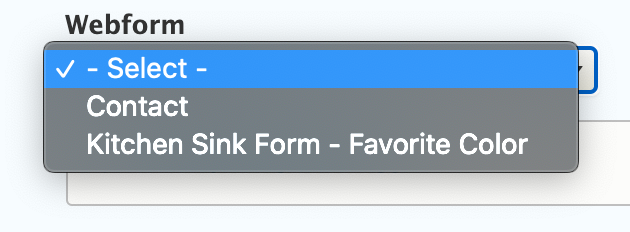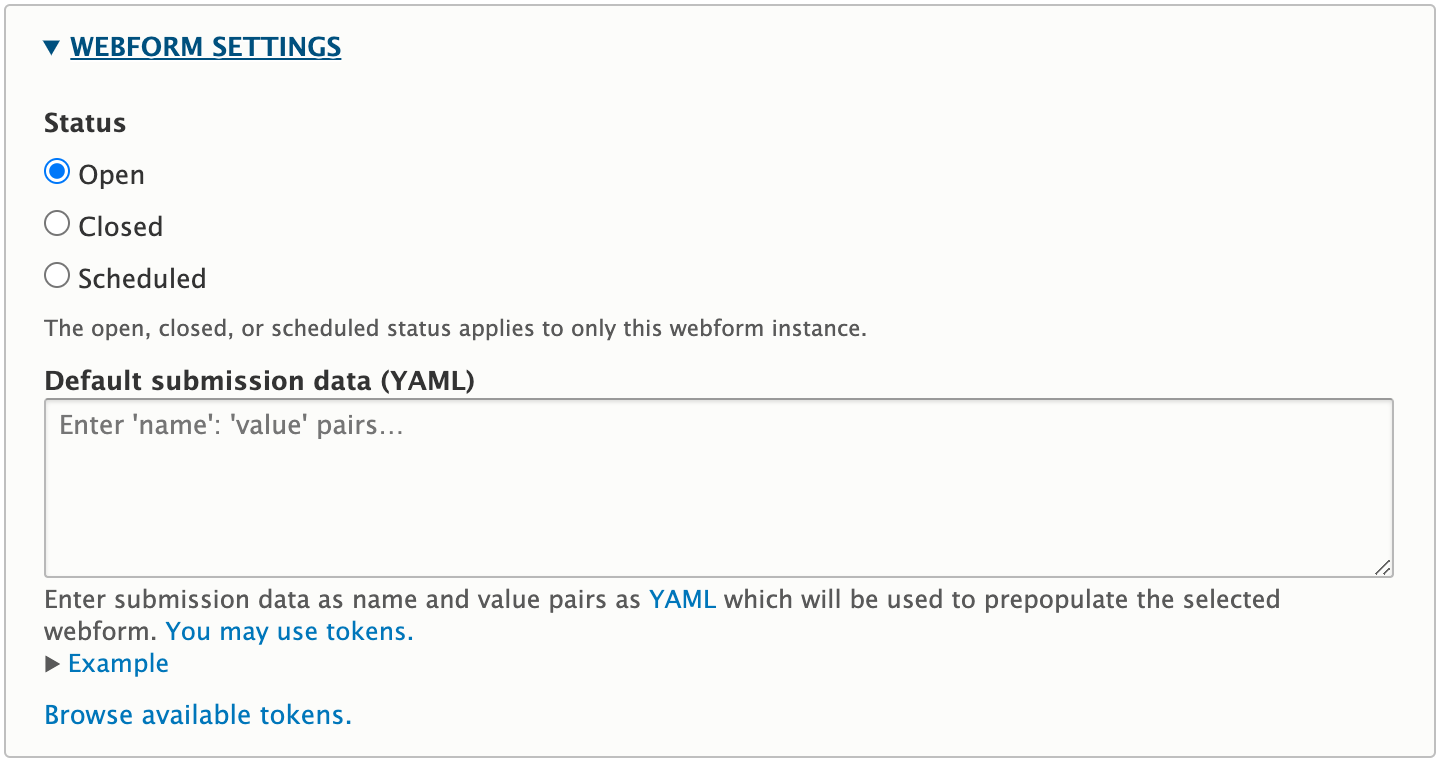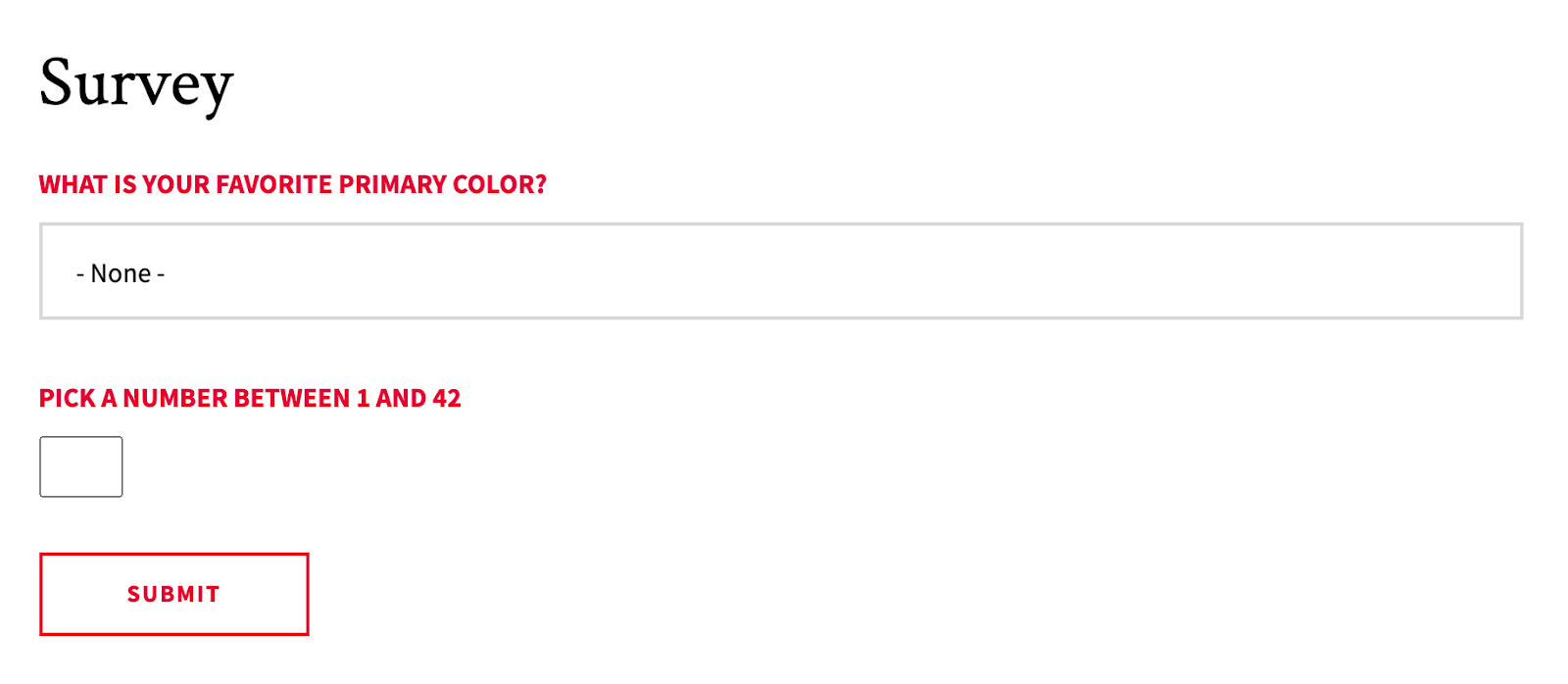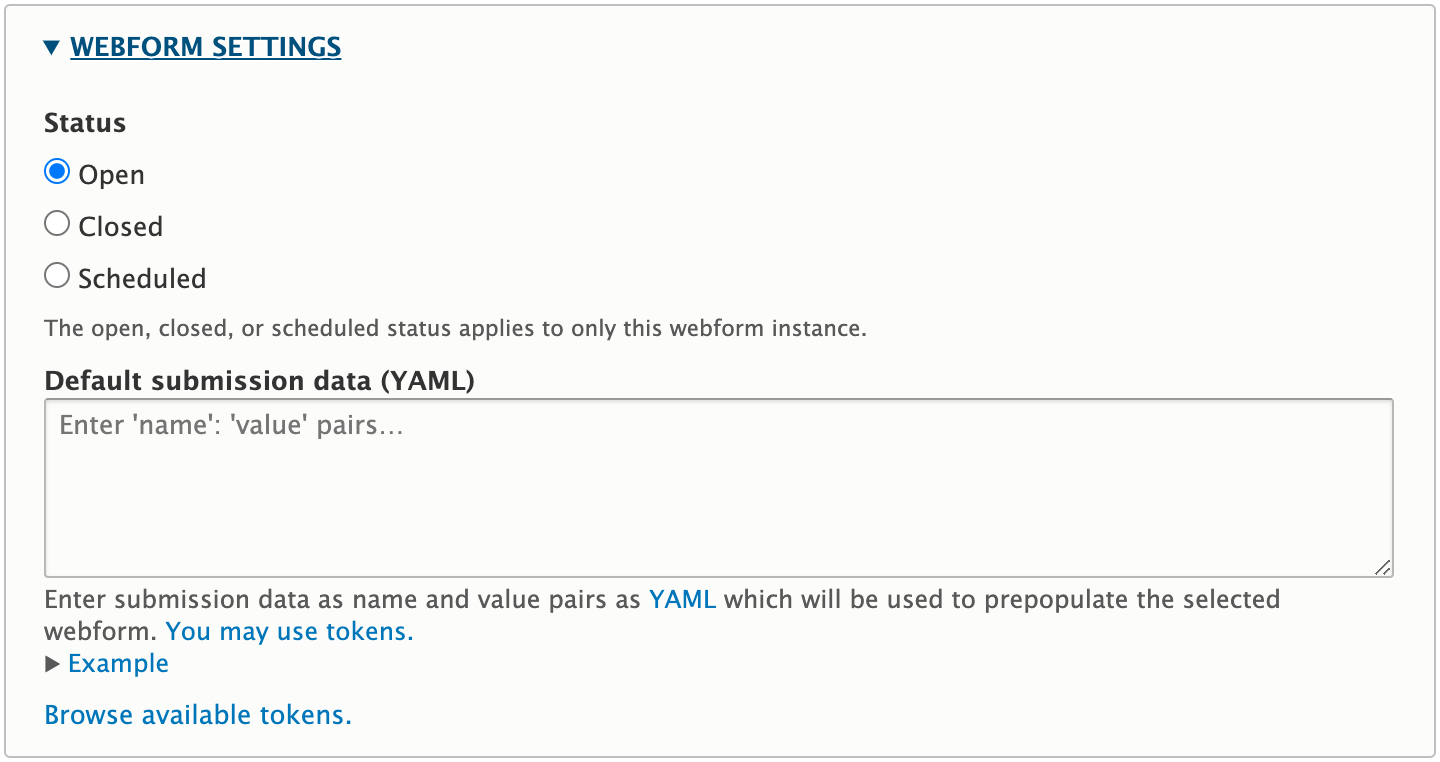Webform (FOR ADVANCED USERS)
The Webform widget will display an online form created through Drupal's own webform tools. Data submitted to this form is either emailed to a specified address, or saved to the site's database. Webforms are considered an advanced feature of Drupal sites, as such only experienced developers knowledgeable with these features should implement webforms on a site.
- Data Collection Policies: As forms are a useful tool in collecting user information, care must also be taken when accepting user data, so as to adhere to University Policy.
- Adding a form: These guidelines only cover how to add an existing form to a page.
- Creating a form: Consult the webform module information page on drupal.com for information on creating a webform using Drupal. Only experienced developers knowledgeable with these features should create new webforms.
Add a Webform to a page
- Follow the instructions to add a new widget to your page (Select: “Add Webform”), or follow the instructions to edit an existing widget.
- Enter a Title for your webform widget that will appear directly above the form.

- Select an existing form from the dropdown menu below the Title field.

- Expand the “Webform settings” panel by clicking its title or the triangle pointing to the right (►).

- Verify the form’s Status is set to “Open” for the form to accept submissions.

- Save changes at the bottom of the page.
Recommendations for creating webforms
Do
- Be stingy about what form fields you use. Don’t ask too much of the user just because you can.
- Be clear about what is required. All fields that are required should be designated as such, and will display a red asterisk (*).
- Place all form fields in a single column.
- Avoid using placeholder text where possible.
- Make placeholder text an example of what the user can write. If used, this is especially helpful for questions that go beyond simple information such as name and address.
- Use specific language in your “Submit” button. Rather than using the word “Submit,” try something that is more specific to the form information being gathered, and where that information is going.
Don’t
- Use the form label as the placeholder text. This looks odd when, for example, someone is putting in their name and they read “First Name” as the label and then immediately following is “First Name” as the placeholder text.
Front-end View (What it looks like)

Back-end View (What the editor sees)

